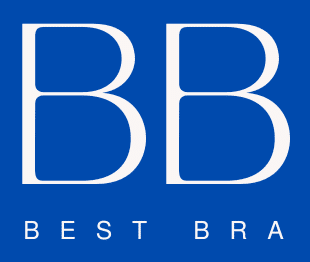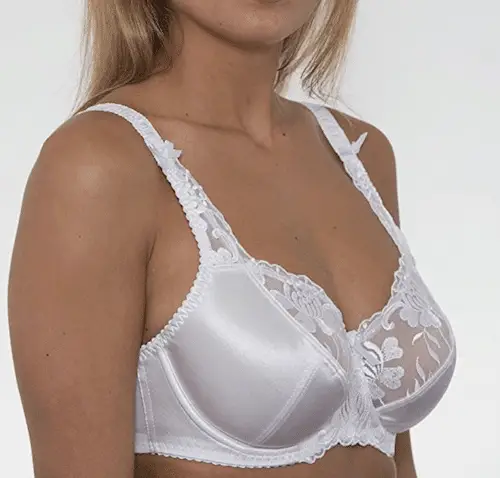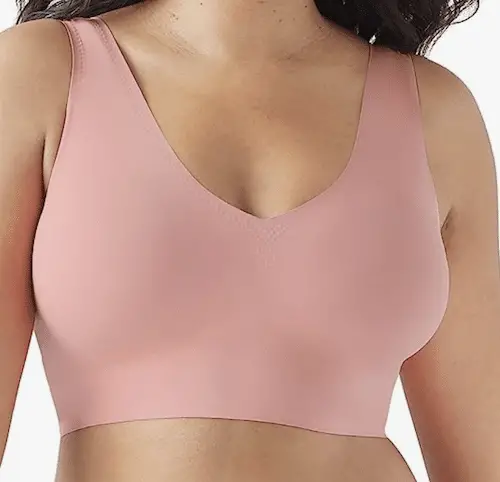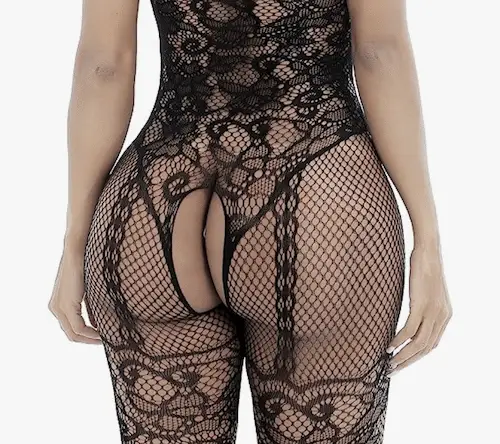Table of Contents
Are you confused about the difference between a DD and an E cup? You’re not alone, especially if you’re a woman with larger breast measurements. These sizes can vary depending on the brand and style of the bra, but sister sizing can help you find the perfect fit. For example, a 38DD can be equivalent to a 40D or a 36E depending on your chest measurement. A 30DD is less common but still available for those with smaller band sizes and larger cup sizes. In some countries, DD cups are equivalent to an E cup, while in others, DDD cups are equivalent to an F cup. So when should you size up to a DD cup or size down to a D cup? It all depends on your individual body shape and preferences.
It’s important to find the right fit, especially when it comes to bra sizes and bra cups. If you have a larger breast size, ensuring the correct breast measurement is crucial. Let’s dive in!
DD vs E Cup Sizes: What’s the Difference?
Understanding Bra Cup Sizing
One of the most important things for a woman to get right is her cup size, whether it’s a 38DD or 30DD. While many people assume that DD and E cups are the same thing, there are actually some key differences between these two sizes. It’s also worth noting that in the US, DDD is often used interchangeably with E.
Firstly, it’s important to understand how bra sizing works. The number in a bra size refers to the band measurement around your ribcage, while the letter corresponds to your cup size. As you go up in cup sizes, the volume of the cup increases as well. Whether you’re a 38DD or a 30DD, it’s crucial to find a brand that fits comfortably and supports your chest.
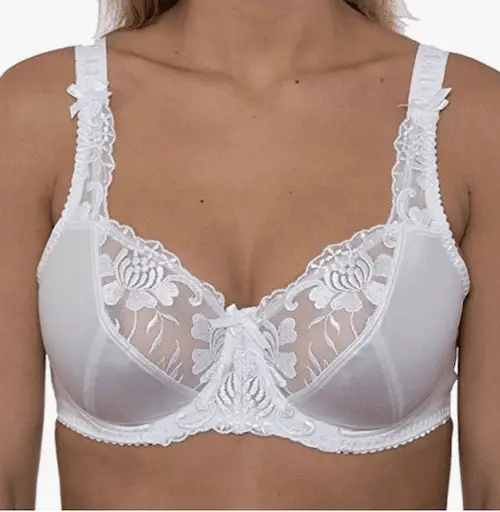
The Difference Between DD and E Cups
So what exactly is the difference between a DD and an E cup? In short, an E cup is one size larger than a DD. However, it’s worth noting that this can vary depending on the brand and style of bra you’re looking at. If you’re looking for sister sizes, a 38DD is equivalent to a 30DDD (or 30DD in some brands).
In some cases, you may see DDD instead of an E cup – this is simply another method of denoting a triple-D cup size. It’s important to remember that different brands may use slightly different sizing systems based on the even number of your rib cage.
Why Proper Measurement Matters
Getting properly measured for a bra is essential if you want to ensure a comfortable fit, especially if you have a larger breast size such as a DD cup. Wearing a bra that’s too small or too large can lead to discomfort, pain or even health problems over time, especially if it doesn’t properly fit your rib cage. Make sure to get your correct bra size number by getting measured by a professional.
If you’re unsure about your current bra size or haven’t been measured in awhile, consider booking an appointment with a professional fitter. They’ll be able to take accurate measurements of your rib cage and suggest styles that will work best for your body shape, even if you have a dd cup.
While there may not be a huge difference between DD and E cups in terms of volume, it’s still important to pay attention to sizing when shopping for bras. By getting properly measured and understanding how different brands interpret sizing systems, you’ll be able to find bras that fit comfortably and provide the support you need.
Understanding Cup Volume: How Cup Size Increases as Band Size Increases
Cup size increases as band size increases
Understanding the relationship between cup size and band size is crucial in finding the right fit. One of the most important things to know is that cup size increases as band size increases. This means that a 34D bra has a larger cup volume than a 32D bra.
Cup volume is not the same across all cup sizes
It’s important to understand that cup volume is not the same across all cup sizes. For example, a B cup on a smaller band size may have less volume than a B cup on a larger band size. This is because the letter (B, C, D, etc.) represents the difference between your bust measurement and your underbust measurement. So while two bras may both be labeled “C cups,” one may have more volume than the other depending on the band size.
Understanding band size is crucial in finding the right cup volume
To find your correct bra size, you need to take into account both your underbust measurement (which determines your band size) and your bust measurement (which determines your cup size). If you try on a bra with the correct band size but find that the cups are too small or too big, it’s likely that you need to adjust your cup size accordingly.
Here are some tips for finding the right fit:
-
Use a measuring tape to measure around your ribcage just below your breasts to determine your underbust measurement for bra sizes. This is an essential step in finding the right size bra, including dd cup and other bra cups.
-
Measure around the fullest part of your breasts to determine your bust measurement.
-
Use an online calculator or consult with a professional fitter to determine your correct bra size.
-
Try on different styles and brands of bras in multiple sizes until you find one that fits comfortably and securely.
Remember, every body is different and there’s no one-size-fits-all solution.
Comparison Chart for Bra Cup Sizes: DD, E, and Other Common Cup Sizes
Understanding Bra Cup Sizes
Bra cup sizes can be confusing, especially. It’s important to note that bra cup sizes are not standardized across all brands and styles. However, there are some general guidelines that can help you understand the difference between these cup sizes.
Comparison Chart for Bra Cup Sizes
To help you visualize the differences between DD, E, and other common cup sizes, here is a comparison chart:
Cup Size Difference from Previous Size AA N/A A 1 inch B 2 inches C 3 inches D 4 inches DD/E 5 inches DDD/F 6 inches G 7 inches
As you can see from the chart, each cup size represents an increase of one inch in breast circumference from the previous size. So a woman who measures 35 inches around her bust would wear a B-cup bra (assuming she has a band size of 34).
It’s worth noting that some brands use different letters to represent larger cup sizes. For example, instead of using DD or E cups, they might use FF cups or even higher.
Example of How to Read a Bra Cup Size Chart
Let’s say you measure yourself and find that your bust circumference is 38 inches. According to the chart above, you would need a bra with a cup size that is five inches larger than your band size.
Assuming your band size is 36 (which would make your overall bra size a 36DD), you would need to go up one more cup size to get an E-cup bra. So in this case, you would need a 36E bra.
Finding Your Perfect Fit: Measuring Yourself Correctly for DD or E Cup Bras
Taking Accurate Breast and Band Measurements
Taking accurate measurements is key. Start by using a tape measure to take your breast measurement. Measure around the fullest part of your breasts, ensuring that the tape measure is parallel to the ground. This will give you an accurate bust measurement.
Next, take your band measurement by measuring around your chest just below your breasts. Ensure that the tape measure is snug but not too tight. This will give you an accurate band measurement.
Determining Your Cup Size
To determine your cup size, subtract your band measurement from your bust measurement. The difference between these two measurements will correspond to a letter in the alphabet, which represents your cup size.
If the difference between these two measurements is less than 1 inch, then you are an AA cup size. If it’s 1 inch, then you are an A cup size. For every additional inch difference in measurements, add one more letter to determine your cup size.
For example:
-
If there’s a 2-inch difference between bust and band measurements: B Cup
-
If there’s a 3-inch difference between bust and band measurements: C Cup
-
If there’s a 4-inch difference between bust and band measurements: D Cup
-
If there’s a 5-inch difference between bust and band measurements: DD or E Cup
It’s important to note that different brands may have slightly different sizing charts so make sure to check their specific sizing chart before making any purchase.
Choosing the Right Bra Style
Once you have determined your correct bra size based on accurate breast and band measurements, choosing the right style of bra can also help with achieving optimal comfort and support.
For those with larger busts (DD or E cups), underwire bras can provide extra support and lift.
Importance of Wearing a Well-Fitted Bra: Comfort, Support, and Confidence
Why Do Women Wear a Bra?
Women wear bras for various reasons. Some wear them to support their breasts while others wear them as a fashion statement. No matter the reason, wearing a well-fitted bra is essential for comfort, support, and confidence.
What Is a Bra?
A bra is an undergarment designed to support the breasts. It typically consists of two cups that cover each breast and are held in place by straps around the shoulders and a band around the ribcage.
Many women struggle. However, wearing an ill-fitting bra can cause discomfort, pain, and even long-term health problems. Here’s why:
-
Fitting Bra Cups: A fitting bra should have cups that fit the breasts properly without any spillage or gaping. If the cups are too small or too big, they can cause discomfort or make you feel self-conscious.
-
Properly Fitted Straps: The straps should be adjusted so they’re not too loose or too tight. Properly fitted straps help distribute weight evenly across the shoulders and back, reducing strain on these areas.
-
Band Fit: The band should fit snugly around the ribcage to provide support and prevent discomfort. If it’s too loose or tight, it can cause irritation or even breathing difficulties.
-
Support Breast Tissue: A well-fitted bra supports breast tissue and prevents sagging over time.
-
Professional Fitters Can Help Guide You: Many women struggle with finding their correct bra size or style on their own. Fortunately, professional fitters can guide women in finding the right bra size and style to meet their needs.
Choose the Right Bra Size for You
In conclusion, understanding the difference between DD and E cup sizes is crucial in finding your perfect bra fit. Cup volume increases as band size increases, so it’s important to measure yourself correctly before purchasing a bra. A well-fitted bra not only provides comfort and support but also boosts confidence.
To ensure you’re wearing the right size, refer to our comparison chart for DD, E, and other common cup sizes. Don’t settle for a bra that doesn’t fit properly – take the time to find the right one for you.
Remember to consider factors such as band size, cup volume, and shape when choosing a bra. Don’t hesitate to try on different styles and brands until you find what works best for you.
FAQs
Q: How do I know if I’m wearing the wrong size bra?
A: Signs of an ill-fitting bra include discomfort or pain in the shoulders or back, spillage over the cups or underwire digging into your skin.
Q: Can breast size change over time?
A: Yes, factors such as weight gain/loss or pregnancy can affect breast size.
Q: How often should I replace my bras?
A: It’s recommended to replace bras every 6-12 months depending on how frequently they are worn.
Q: Do all brands have consistent sizing?
A: No, sizing can vary between brands so it’s important to refer to their specific sizing charts before purchasing.
Q: Is it necessary to get professionally measured for a bra fitting?
A: While it’s not necessary, getting professionally measured can be helpful in determining your correct size and identifying any unique fitting needs.
